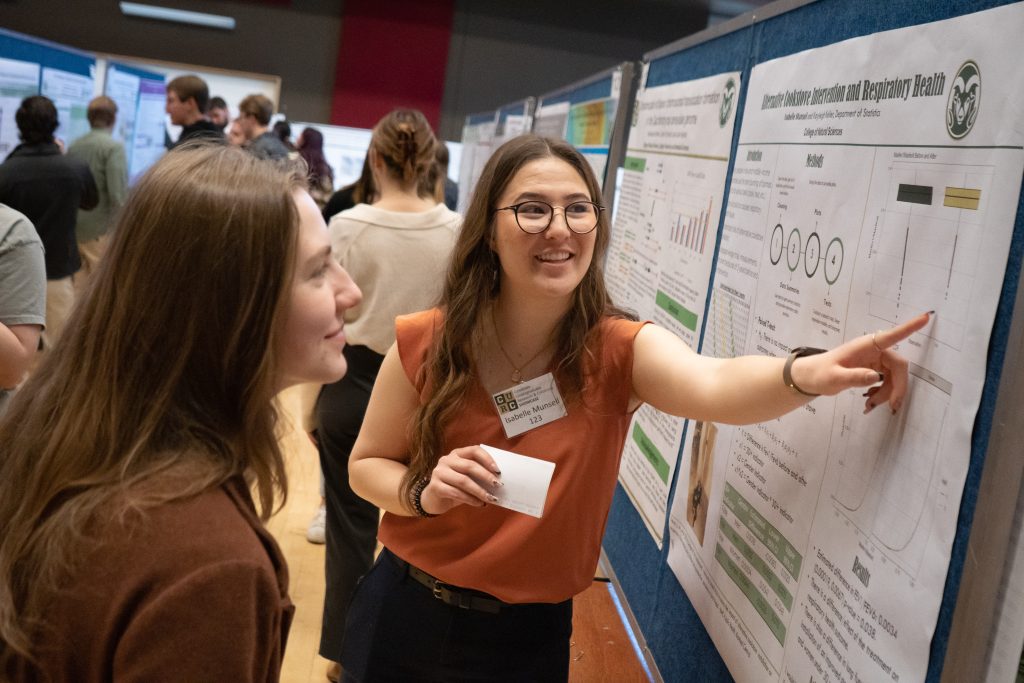Hear from four MURALS participants about their experiences
Emma Bovaird, Mihika Sodani, Hannah Gilliard and Christina Fournier discuss what they learned during MURALS, and what they enjoyed most.
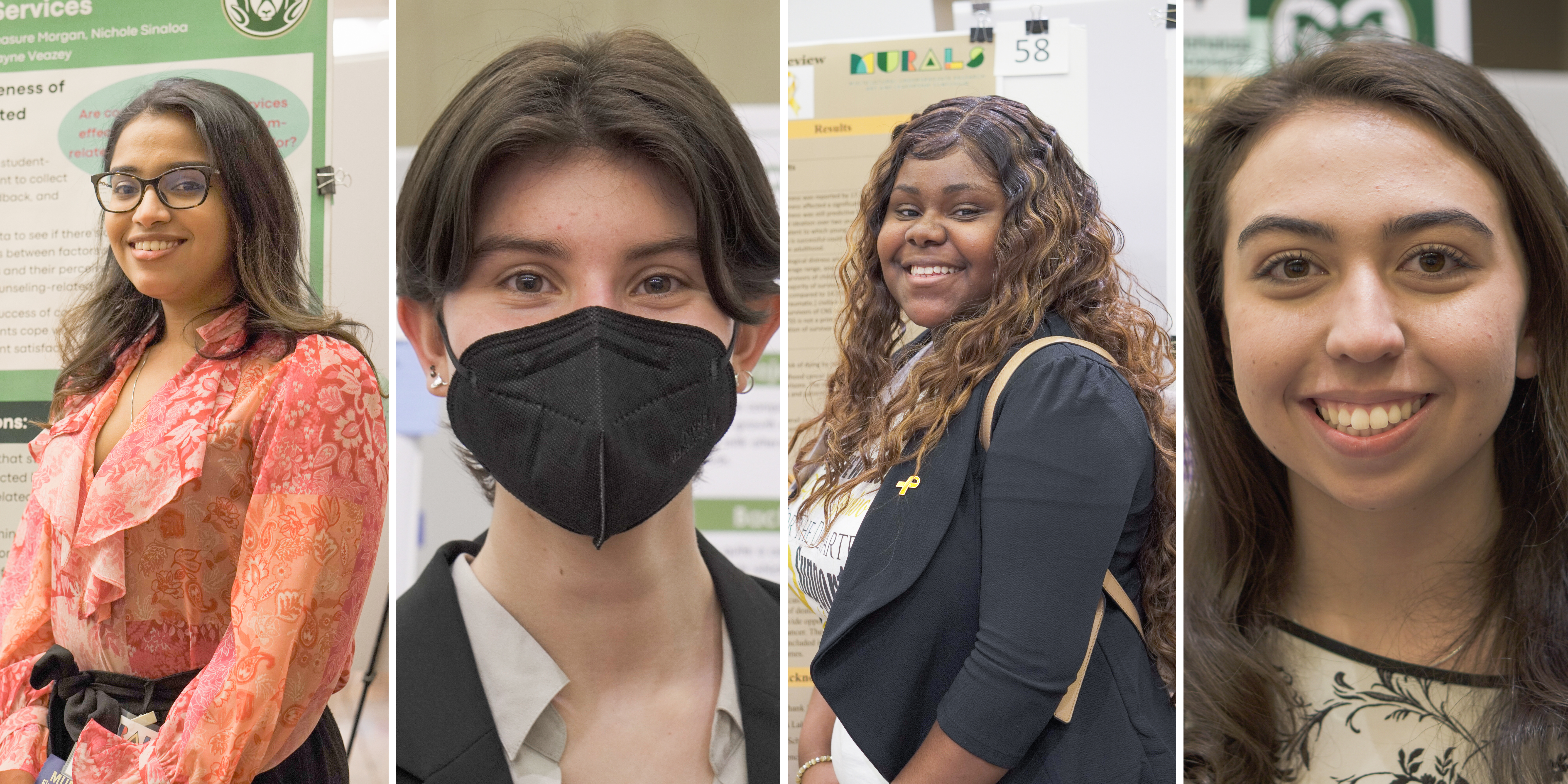
Emma Bovaird
First-year, Department of Biochemistry and Molecular Biology
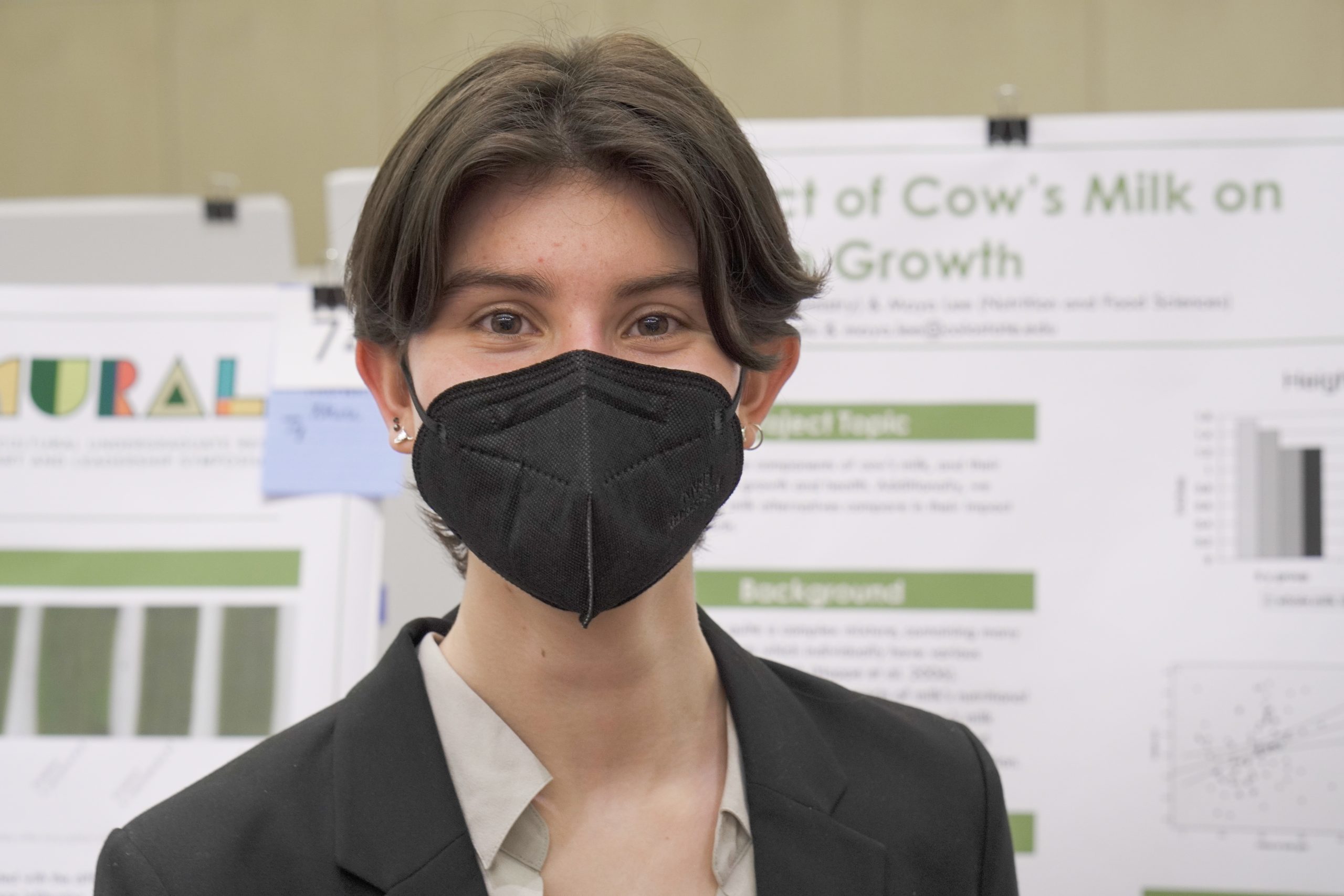
What was your research project?
With a co-presenter I analyzed a cumulative academic article on how cow’s milk can impact human growth. My partner being a nutrition major, we considered the effects of the macronutrients and hormones found in milk on the human body, weighing their benefits against the potential long-term effects of milk consumption. This is an important topic to consider regarding how milk can act as a supplement for many commonplace nutrients that are often lacking in malnourished communities. We discussed the impacts of hormones and their implication of increased cancer risk, but overall determined that further research needs to be conducted on the topic to draw more conclusive determinations.
Describe your experience participating in MURALS.
MURALS was an incredible experience, with informative guest speakers and a number of interesting topics being discussed. Between our own presentations, I was able to hear about other STEM and some liberal arts topics. It amazed me to consider how far-reaching research can be and how many areas still have so little known about them.
Compare how you felt on your first day working on this project, to how you felt when presenting.
Initially, my partner and I had no understanding of what MURALS really was. But we discussed a number of potential research paths before settling on a topic that interested and pertained to us both: milk. Having different academic backgrounds, we were able to bounce off of one another’s knowledge, and slowly we became more focused and precise in our understandings. By the day of our presentation, my partner and I easily answered questions, as by then we had a cumulative and far-reaching knowledge of what we poured hours of work into. It was beyond exciting to share all we learnt, be challenged by the questions we were asked and be presented with future paths that this research could go down.
Mihika Sodani
Third-year, Department of Psychology, part of the United in STEMM Innvoation Experience
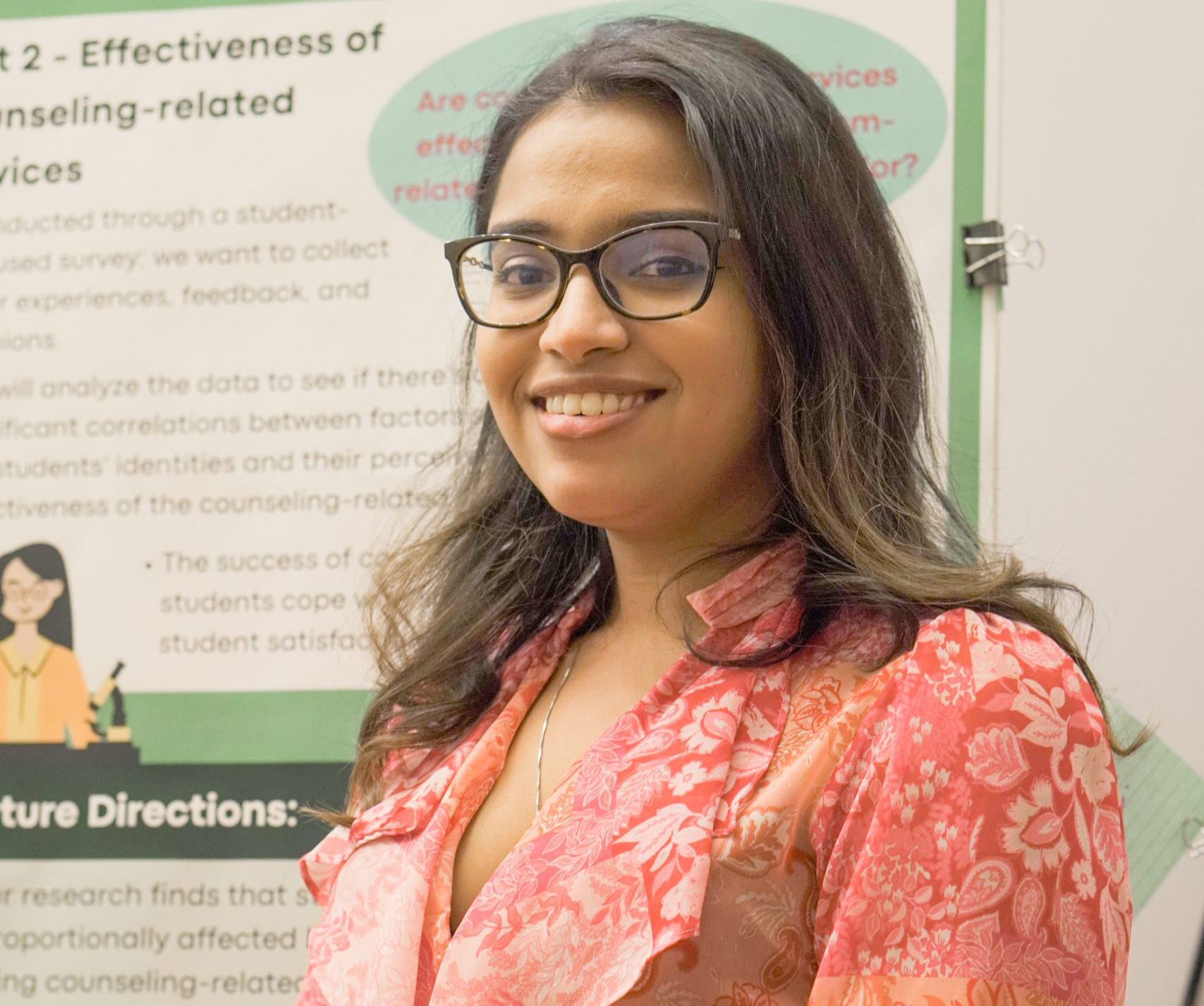
What was your research project?
Our research project is called “Bridging the divide: Assessing racism-related stress on campus and counseling services,” which is a two-part study we have designed. After doing enough background research we found plenty of qualitative data to corroborate that STEM students of color (SOC) is a group that feels immense stress on college campuses, especially stress stemming from racist acts or encounters. We designed our study to find quantitative data to go along the qualitative data where we will have 40 people in four groups of 10: STEM and Non-STEM SOC and STEMM and Non-STEMM white students. They will wear Garmin watches that monitor heart rate, blood oxygen and respiration, all markers of physiological reaction of feeling stressed, and will journal any stressful event they come across for a week with time stamps to when it happens. Having their quantitative data along with qualitative data will give us a holistic image of what happened. We will look for statistical significance of this data to find if there is a difference in stress among our groups. Meanwhile, for the second part of the project we will open a survey for all the students here at CSU that covers counseling, and counseling related services on campus, and student experience with it to gather data on how effective they are. If we find data that supports our hypothesis that students of color in STEM experience more stress than any other group on campus, we will work with the CSU Health Network to improve the current services to better help students of color. If we don’t find data to support our hypothesis, we will look at what currently is working well and highlight that for better reach.
Describe your experience participating in MURALS.
As a psychology major, I felt quite thrilled to be researching stress on campus. I am currently taking PSY 350, Research Design and Analysis II, which teaches us to use R and how to run a statistical analysis using R. I am looking forward to being able to implement that knowledge when we have data to run analysis. I also was able to provide quite some insight into shaping the research question and research design, especially in the aspects of stress, stressors, buffers and further aspects. I have not taken many clinical and counseling classes yet, but I feel like all the knowledge from my psychology classes amalgamated and helped me in ways I cannot define.
Compare how you felt on your first day working on this project, to how you felt when presenting.
I remember the first day at this internship, I was very clueless about what we were going to do, and it all looked difficult, taxing and overwhelming. I was working with nine other students I had never met and was worried about how everything was going to turn out. We spent the entirety of Fall ‘21 looking for a research question we all felt motivated to research and by the time we came up with a project, I felt quite confident in myself and my team to be able to pull this off. I went from feeling unsure, nervous and scared on my first day to feeling focused, exhilarated and confident on the day of MURALS. I feel like we came a long way.
Hannah Gilliard
Second-year, Department of Biology, part of the United in STEMM Innvoation Experience and the OURA Lab
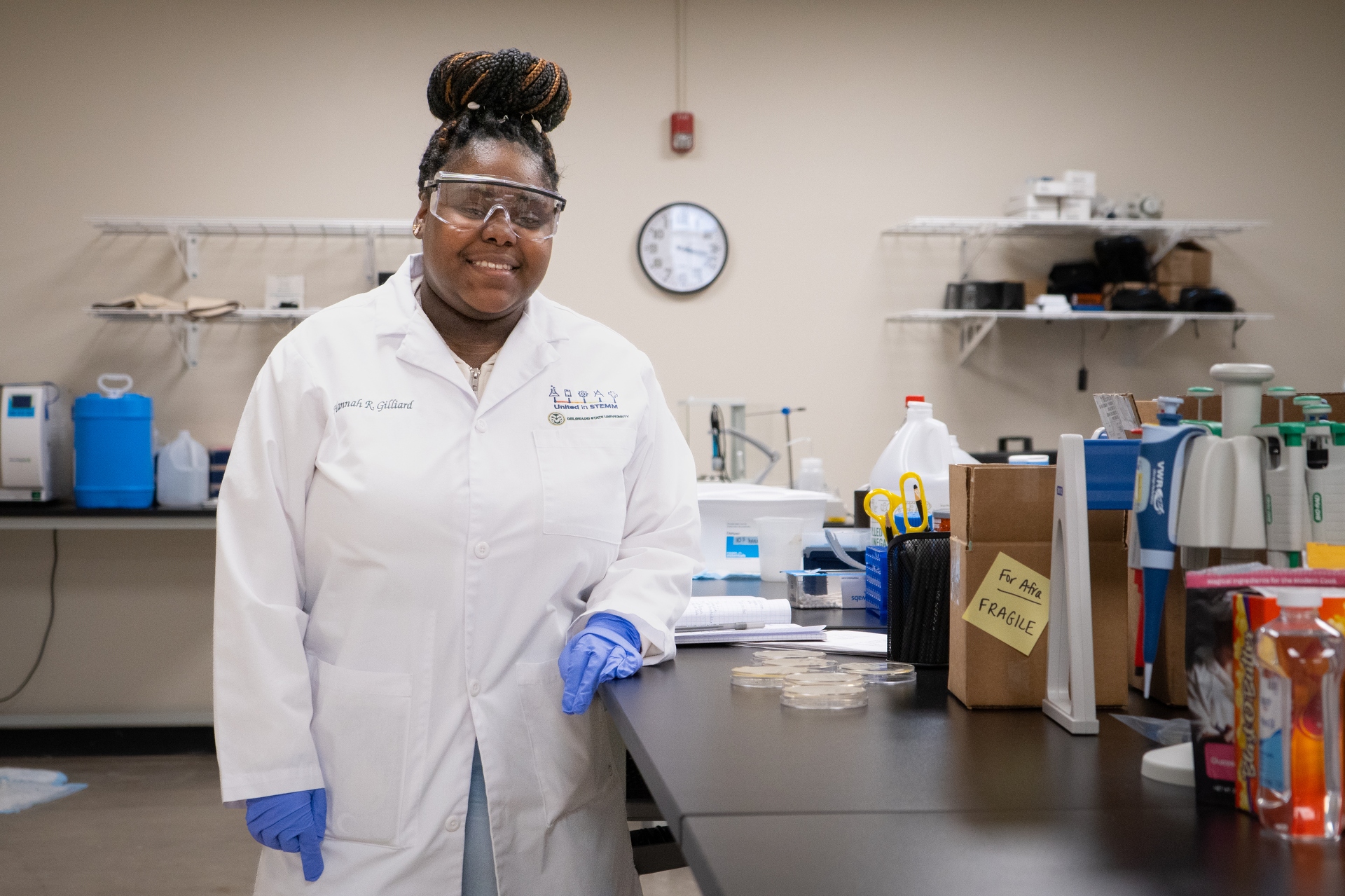
What was your research project?
“Childhood Cancer Survivors and Psychological Outcomes: A Literature Review.” The purpose of this review is to explore and focus on psychological outcomes among survivors of childhood cancer. The diagnosis, treatment and medical late effects of childhood cancer may alter the psychosocial trajectory of survivors across their life course.”
Describe your experience participating in MURALS.
My experience with MURALS was exciting. I was able to network with many people, such as students and professors. I was able to share my research with everyone and received wonderful feedback that consisted of people relating to my topic, as well as wanting to know more about my topic. I also met some professors that wanted to work with me to continue my research. This experience was very memorable and it showed the dedication of all the students.
What was one of your favorite moments from this experience?
My favorite moment was winning the Rising Star in Social Sciences and Humanities Award. I was nervous because I wasn’t sure if I would win. It was awesome to know that the judges understood the importance of my topic and the need for more research.
Christina Fournier
Second-year, Department of Biology, part of the United in STEMM Innvoation Experience and the OURA Lab
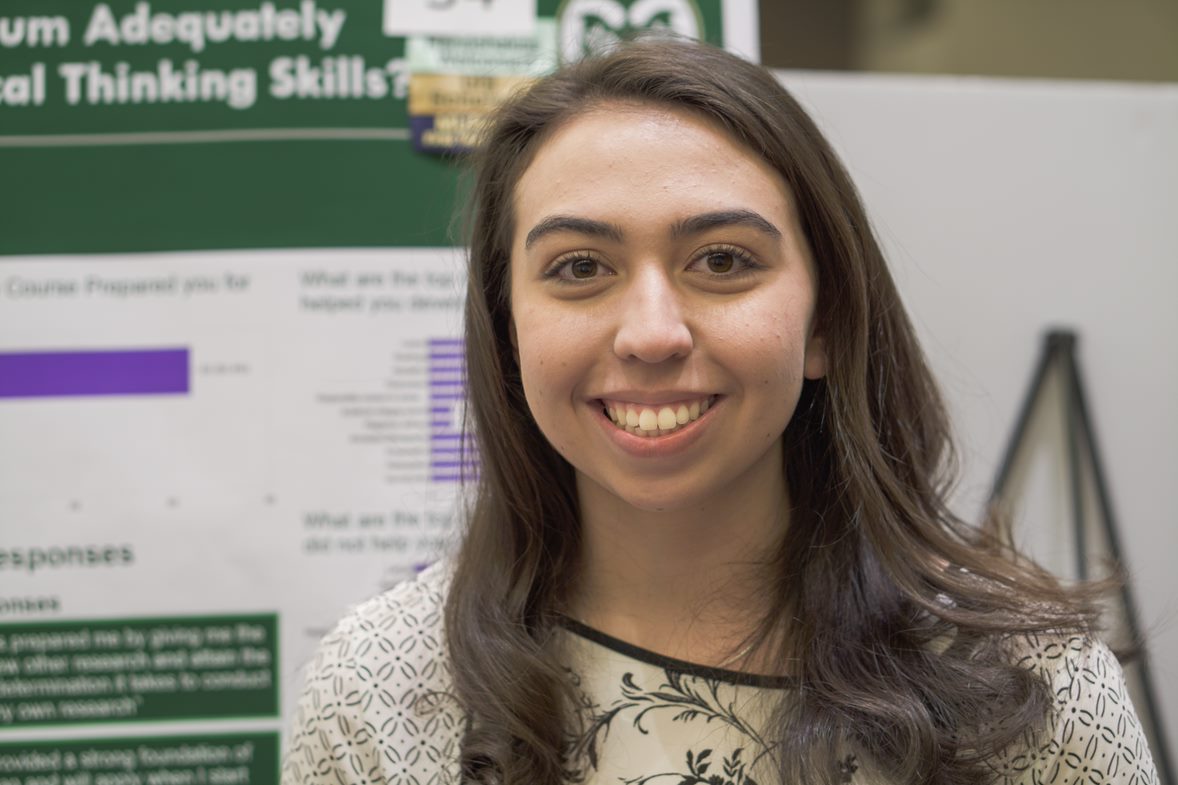
What was your research project?
MURALS was a great experience to get introduced to the research field. I presented my research project regarding the Chemistry First-Year Seminar at CSU and whether the curriculum adequately prepares students with research and critical thinking skills. We want to make sure the chemistry students here at CSU are getting the quality foundational chemistry skills they need to pursue their futures in research and labs. We did this by surveying the students enrolled in the course and asking for their feedback on the curriculum. With their feedback, we are now able to improve the class and make it a better experience for students going into research.
What is something you gained by participating in undergraduate research?
By participating in undergraduate research, it has helped me learn about the different types of research that undergrads can participate in. Research can cover so many different topics and genres, so anyone can discover research that they enjoy doing. Doing a research project is an opportunity to further your knowledge on a topic you are genuinely interested in, which can be super beneficial as a student. You can also make connections in the research field, which can be beneficial to your personal research. Overall, undergraduate research is a great experience for any student, and I highly recommend everyone to get involved.
Compare how you felt on your first day working on this project, to how you felt when presenting.
Starting new research is always a scary, but exciting experience. You don’t know how it will turn out or if it will even work, but you are excited to see what happens. Compared to that, the feeling you have when you finally present is rewarding. You feel accomplished for the research you did and for sticking though with it all the way. This is how I felt working on my research for MURALS. I was a bit nervous at first that the research would not work. But finishing it and presenting my research at MURALS was such a rewarding and beneficial experience. I got to show my hard work and present it to people who were genuinely interested in it. I was proud of the work I did and I am motivated to continue my work throughout my undergraduate career. Research is such a beneficial opportunity for undergrads here at CSU. Getting involved in research was such a great opportunity for me and I recommend it to everyone.



